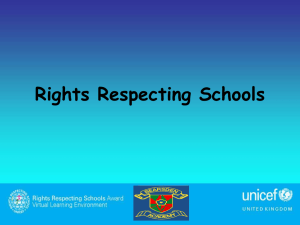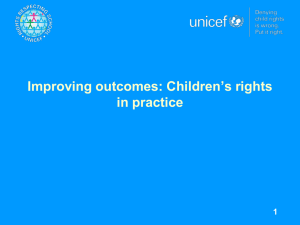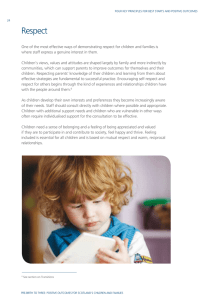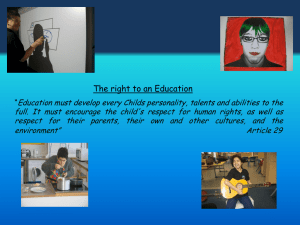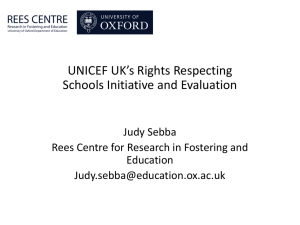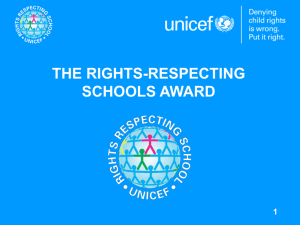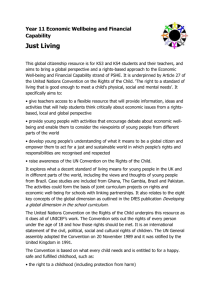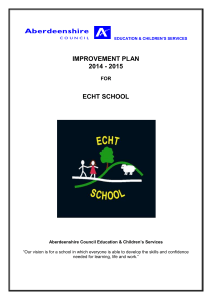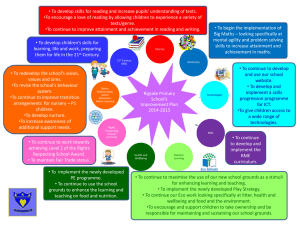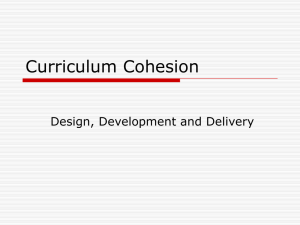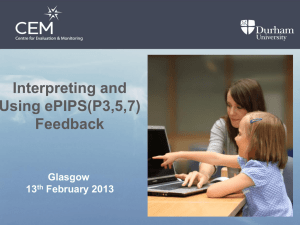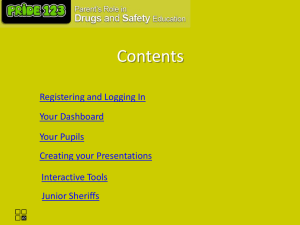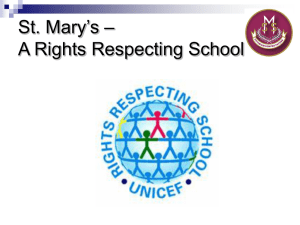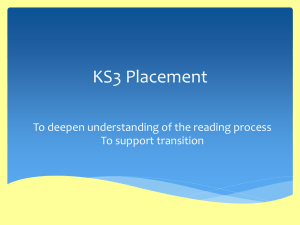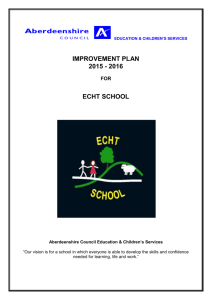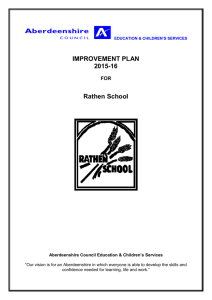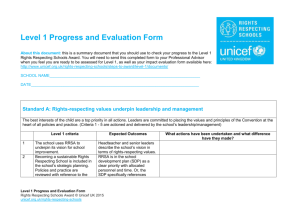Our Journey to become a Rights Respecting School
advertisement
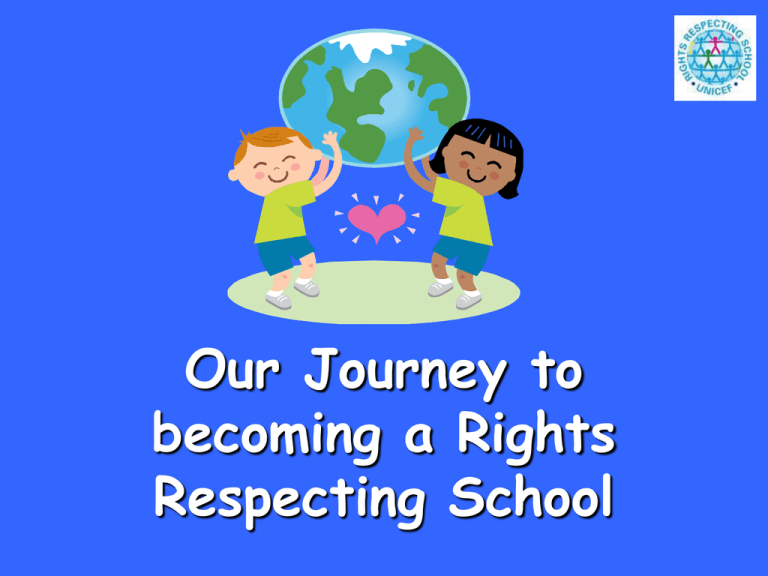
Our Journey to becoming a Rights Respecting School What is a Rights Respecting School ? • The Rights Respecting Schools Award (RRSA) recognises achievement in putting the United Nations Convention on the Rights of the Child (CRC) at the heart of a school’s planning, policies, practice and ethos. • A rights-respecting school not only teaches about children’s rights but also models rights and respect in all its relationships: between teachers / adults and pupils, between adults and between pupils. The universality of the CRC provides a clear link for pupils between building up their rights-respecting school, understanding their rights and the need for children’s rights to be realised everywhere. Children and young people in rights respecting schools develop a stronger sense of the need to act for global justice. Why teach about rights? • With rights come responsibilities. This helps children to develop a sense of their responsibility to respect the rights of others. Links with Health and Wellbeing “ As I explore the rights to which I am entitled, I am able to exercise these rights appropriately and accept the responsibilities that go with them… I show respect for the rights of others” A Curriculum for Excellence (Social Wellbeing) What do we mean by rights? • These are not the same as ‘wants’. With the children we are exploring the difference between a want and a need and developing an understanding of how the UNCRC enables children and young people to gain access to all the things they need to help them develop into happy and healthy adults. Classroom Charter Right How I can help others have their right? How Mrs Leitch helps us have this right? The right to an education (Article 28) I must not disrupt learning for others I will help and support you in your learning The right to express your opinion (Article 12) I must listen to others when they are sharing their opinion. I will provide lots of opportunities for you to share your own view or opinion. The right to be treated equally (Article 2) I will treat everyone equally and fairly I will make sure everyone in the class is treated the same Teaching about Rights Classroom Examples Primary 1 made posters illustrating the rights that they like to enjoy. I have the right to a name. I have the right to shelter. Primary 5 learned about Article 24 as part of health education. They explored the importance of a child’s right to the best possible health and medical care. Skills and Talents Road Show feedback from Primary 5 pupil The RRSA group worked with a local organisation (Kids and co) to make healthy snacks using fair trade fruit. The pupil council and RRSA group worked with Kids and Co to make fruit kebabs and fair trade banana loaf. We were enjoying our right to healthy food! We used this event to help inform parents about our right to nutritious food. The Right to Know! Articles 43-54 are about how adults and governments should work together to make sure all children get all their rights. Our Visit to the Scottish Parliament The pupil council and the RRSA group went to the Scottish Parliament to meet with a representative from SCCYP to find out more about how we could promote the UNCRC in our local community “ We were able to speak to MSPs and find out how they make decisions that will affect us” Aaron (P7) “We learned how to debate and enjoyed the right to our own opinions” Eilidh (P5) “Where, after all, do universal human rights begin? In small places, close to home—so close and so small they cannot be seen on any maps of the world. Yet they are the world of the individual person... Such are the places where every man, woman and child seeks equal justice, equal opportunity, equal dignity without discrimination. Unless these rights have meaning there, they have little meaning anywhere” Eleanor Roosevelt
